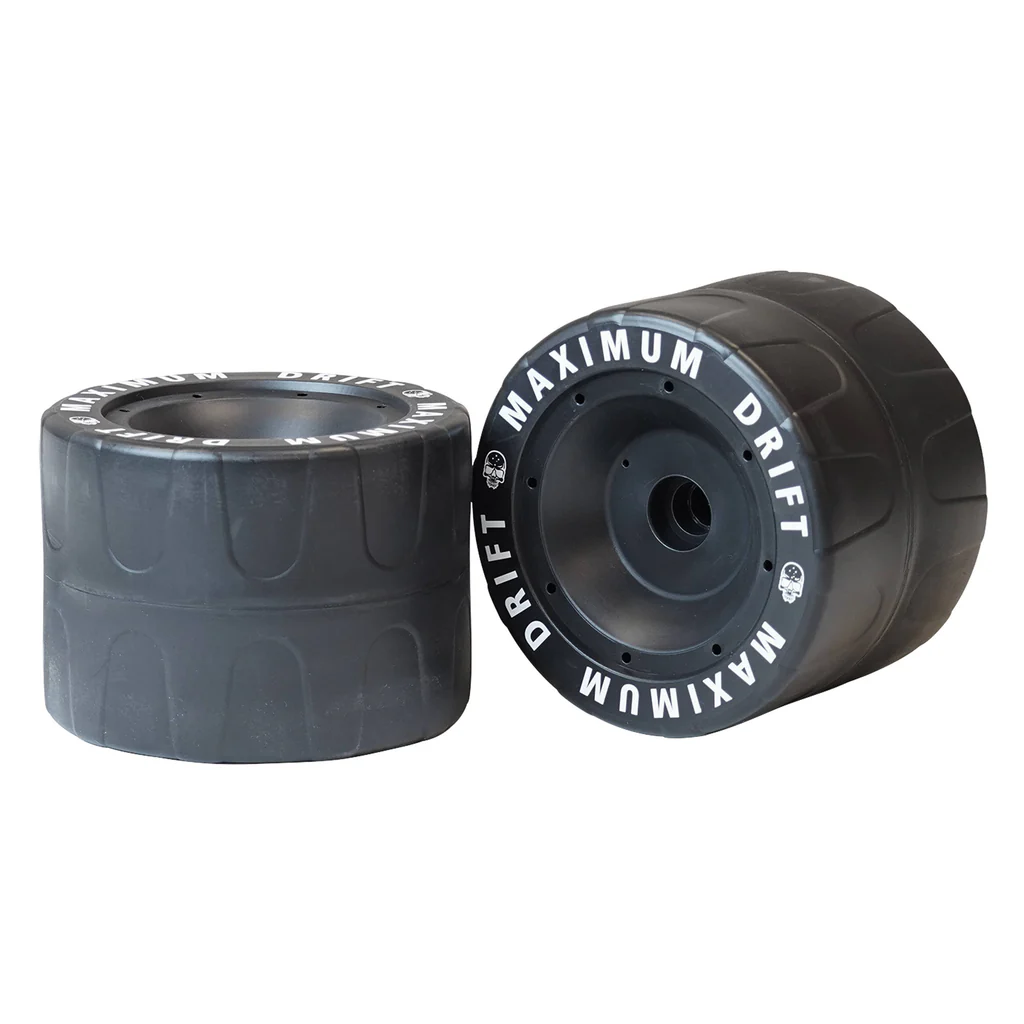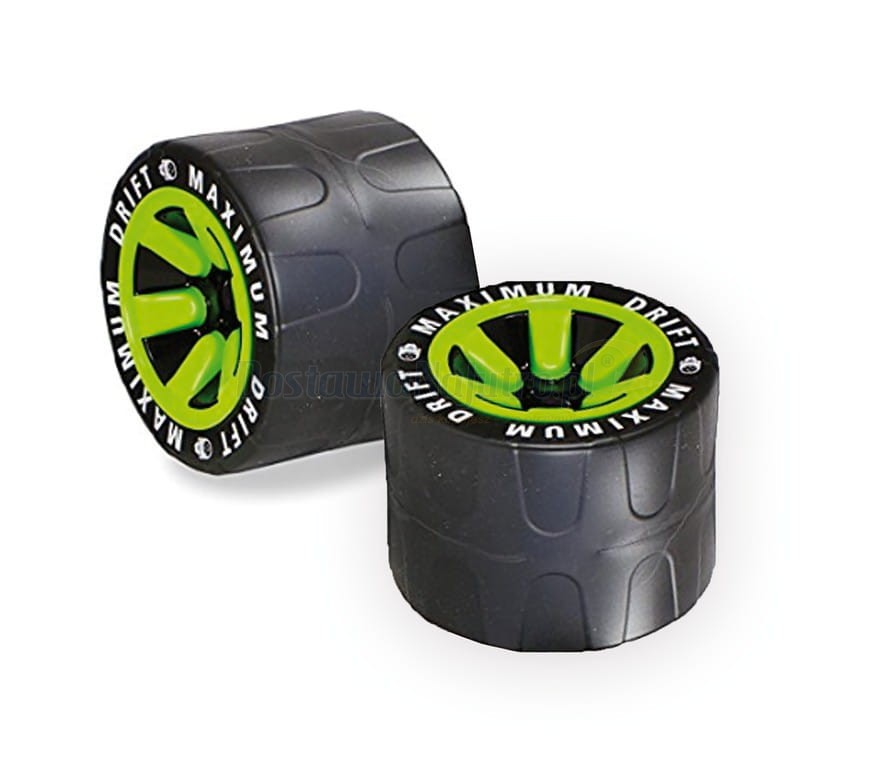When it comes to drifting trikes, one of the most crucial components often overlooked is the drift-trike rims. These rims play a significant role in the performance and handling of your drift trike. Understanding the importance of drift trike rims can help you make informed decisions about upgrading or replacing them. In this blog post, we will explore the world of drift-trike rims, their role, different types, size and weight considerations, material choices, impact on drift performance, maintenance tips, tread patterns, and frequently asked questions.
The Basics of Drift-Trike Rims
At the heart of every thrilling drift trike ride are the rims, integral components that provide essential support and stability to the tyres and, ultimately, the entire trike. Drift-trike rims come in various sizes, designs, and materials, each offering distinct benefits and challenges to the rider. These rims ensure that the tyre remains securely in place during high-speed maneuvers and contribute significantly to the trike’s handling and overall performance. The choice of the rim can affect everything from the drift trike’s agility on tight turns to its stability on straight paths.
This variety allows riders to customize their setup based on personal preference or specific performance needs, whether they prioritize speed, durability, or a balance of both. The construction of the rims influences the trike’s aesthetic appeal, allowing enthusiasts to personalize their ride’s look. As we explore the intricacies of drift-trike rims, we’ll uncover how their characteristics, such as diameter, width, and material composition, directly impact the riding experience. Understanding these basics is the first step in optimizing your drift trike for the exhilaration of drifting, ensuring both safety and fun are maximized on every ride.
Different Types of Drift-Trike Rims Explained
Navigating the myriad options, drift-trike enthusiasts are often presented with a choice among steel, aluminum, and magnesium rims. Each material offers unique characteristics catering to various preferences and riding conditions. Steel rims stand out for their robustness, offering a level of durability that can withstand the rigours of aggressive drifting. However, this strength comes with added weight, potentially impacting the trike’s agility and acceleration. On the other hand, aluminum rims strike a favorable balance between strength and weight, making them a popular choice among riders.
They provide a lighter alternative to steel, enhancing maneuverability and speed without significantly compromising durability. Although the lightest option, magnesium rims command a higher price tag due to their weight-saving properties and performance advantages.
These rims can elevate the drifting experience by offering superior handling and acceleration, appealing to those seeking to push their trike’s performance to the limit. Each rim type presents an opportunity to customize the drift trike’s performance and aesthetics according to the rider’s preferences. Whether prioritizing durability, weight reduction, or a blend of both, selecting the appropriate rim material is critical in tailoring the drift trike to one’s desired specifications.
Size and Weight: Finding the Perfect Balance
Choosing the ideal size and weight for drift-trike rims is pivotal in achieving a harmonious balance between agility and stability. Smaller, lighter rims can significantly enhance the trike’s responsiveness and ease of handling, allowing for swift, sharp turns and quick acceleration. This makes them a favored choice for those prioritizing agility and speed in their drifting experience. Conversely, while adding some weight, more giant rims provide a broader contact area between the tyre and the surface. This increase in contact area can improve traction and stability, which is particularly valuable during high-speed drifts or on uneven terrains.
However, it’s not merely a choice between large and small, heavy and light. The decision must consider the trike’s intended use, the rider’s style, and the specific conditions in which the trike will be operated. For instance, a heavier rim might be beneficial for drifting on surfaces that require more grip, as the additional weight could help maintain a consistent contact patch. A lighter rim could offer the competitive edge needed on smoother surfaces or in competitive settings where speed is paramount.
Ultimately, the journey to finding the perfect balance is highly individual. It involves experimenting with different rim sizes and weights to discover what best complements your drift trike’s performance characteristics and aligns with your riding preferences. Through this exploration, riders can fine-tune their setup for an optimized drifting experience, striking the right balance between the thrill of speed and the assurance of control.
Material Matters: Choosing the Right Drift Trike Wheels
Selecting the ideal material for your drift trike wheels is more than a matter of weight and durability; it’s about matching your wheels to your riding style and the conditions you expect to encounter.
Aluminum
Aluminum is widely recognized for its combination of lightness and strength, making it an excellent choice for riders looking for a balance between speed and resilience. Its corrosion resistance also adds to its longevity.
Steel
Steel wheels are the go-to for riders who priorities durability. Ideal for rugged or abrasive surfaces where impacts are more frequent, steel can handle more abuse without significant wear or deformation. However, the added weight may slightly reduce acceleration and agility.
Magnesium
Magnesium wheels sit at the premium end of the spectrum, offering the lightest weight option for those focused on competitive drifting or seeking the best performance. Their reduced weight contributes to a noticeable increase in acceleration and ease of handling, although at a higher cost.
Beyond material, the construction method of the wheel—such as cast or forged—also plays a role in performance. Forged wheels, for instance, are typically more robust and lighter than their cast counterparts but come at a higher price point. – It’s essential to consider the environmental factors as well. For example, magnesium and aluminum offer better heat dissipation, which is critical during prolonged drifting sessions where wheels are subject to intense friction and heat.
The Impact of Rim Design on Drift Performance
The rim design is a critical factor that can significantly influence a drift trike’s drifting capabilities. Aerodynamic efficiency and thermal management are two pivotal aspects that stem from the design choices made in drift-trike rims. Designs incorporating aerodynamic principles can significantly reduce air resistance, enabling the trike to achieve higher speeds with less effort. This is particularly beneficial during competitive drifting, where every fraction of a second counts.
On the other hand, rims that feature advanced ventilation systems play an essential role in dissipating heat generated from tyre friction and braking. Excessive heat can lead to decreased tyre performance and increased wear, so effective heat management is crucial for maintaining optimal performance throughout a drift session. The structural design of the rim affects the distribution of forces during a drift.
Rims engineered to provide a more uniform stress distribution can help reduce the likelihood of tyre deformation or failure, especially under the intense conditions of competitive drifting. By carefully selecting rims with a design optimized for the specific demands of drifting, riders can achieve better control and stability and an enhanced overall driving experience. Therefore, when evaluating upgrades or replacements, understanding the impact of rim design on drift performance is essential for any drift trike enthusiast aiming to push their limits on the track.
Maintenance Tips for Your Drift-Trike Rims
Maintaining the condition of your drift-trike rims is critical to ensuring safety and performance. Regular checks and upkeep can prevent common issues that could lead to accidents or degrade your trike’s handling. Begin by inspecting your rims for visible signs of wear, such as dents, cracks, or bends. These imperfections can affect the trike’s balance and ability to drift smoothly. It’s equally important to keep your rims clean.
Dirt, grime, and debris can accumulate, adding unnecessary weight and potentially interfering with the tire’s grip on the road surface. Use a mild soap and water solution to gently clean your rims, avoiding harsh chemicals that could damage the rim’s material. Checking tyre pressure is another crucial step in drift-trike rim maintenance. Incorrect tyre pressure can lead to poor performance, increased tyre wear, and even blowouts.
Ensure your tyres are inflated to the manufacturer’s recommended levels for optimal drift performance. Pay attention to the need for regular alignment and balancing checks. Misaligned or unbalanced rims can cause uneven tyre wear, reduced handling precision, and an uncomfortable riding experience. If you need to be more experienced in performing these adjustments, having a professional mechanic inspect and adjust your drift-trike rims as needed is wise.
The Role of Tread Patterns in Drift-Trike Rim Performance
Tread patterns on the tyres that wrap around your drift-trike rims are more than just a detail; they’re a critical component that directly affects your trike’s grip, handling, and ability to drift effectively. Different tread designs cater to varying conditions and styles of riding. For example, tyres with more pronounced tread patterns may offer better grip on loose or uneven surfaces, making them ideal for off-road drifting adventures. Conversely, tyres with a slicker, less aggressive tread are better suited for smooth, paved surfaces, where maximizing contact with the ground enhances control and speed during drifts.
Selecting the appropriate tread pattern is essential for optimizing your drift-trike’s performance. A mismatch between the tread pattern and the riding surface can lead to reduced traction, increased tyre wear, and potentially unsafe drifting conditions.
Consider the environments you’ll be drifting in most frequently when choosing your tyres. Also, factor in how different tread patterns might interact with your drift-trike rims’ specific materials and designs. For example, lightweight aluminum rims paired with slick tyres offer an excellent combination for high-speed drifting on asphalt, while steel rims with rugged tyres are the duo you need for tackling rough, off-road trails. Tailoring your tyre choice to match your rims and preferred drifting conditions will ensure you get the most out of your drifting experience.
Conclusion
Ultimately, the choice of drift trike rims significantly influences your trike’s agility, stability, and style. Deliberate selection based on desired performance outcomes—achieving faster acceleration with lightweight materials or ensuring durability with more challenging options—will enhance your drifting experience. Remember, the ideal rims balance size and weight to suit your riding preferences and conditions. Maintenance, from regular cleaning to alignment checks, also plays a pivotal role in preserving rim condition and ensuring consistent performance.
FAQs
Q: Can I switch to a different material for my drift trike rims to improve performance?
A: Absolutely! Changing the material of your drift trike rims can significantly impact performance. Lightweight materials like aluminum or magnesium enhance acceleration and handling. Consider your riding style and the conditions you typically face to select the best material for your needs.
Q: How does rim size affect my drift trike’s behavior?
A: Rim size influences your trike’s agility and stability. Smaller rims can make the trike more elegant, which is great for tight turns, while more giant rims can improve stability at higher speeds or on uneven surfaces. Experimenting with different sizes can help you find the perfect fit for your riding preferences.
Q: What maintenance routines are essential for drift-trike rims?
A: Regularly inspect your rims for damage, keep them clean, ensure tyres are properly inflated, and check alignment and balance. These steps are vital for preserving the rims’ condition and ensuring peak performance during drift sessions.
| Other Good Articles to Read |
| Niche Blogs Connect |
| Blogs 97 |
| Blog Stitution |
| Blogs Cotch Rouge |
| Blog Signatr |
| Blog Sintonias |
| Blog Zilla |
| Consumer Forums |
| Finance Forums |
| G Blogs |
| Too Blog |
| Related Business Listings |
| Contact Directory |
| Local Business Profiles |



